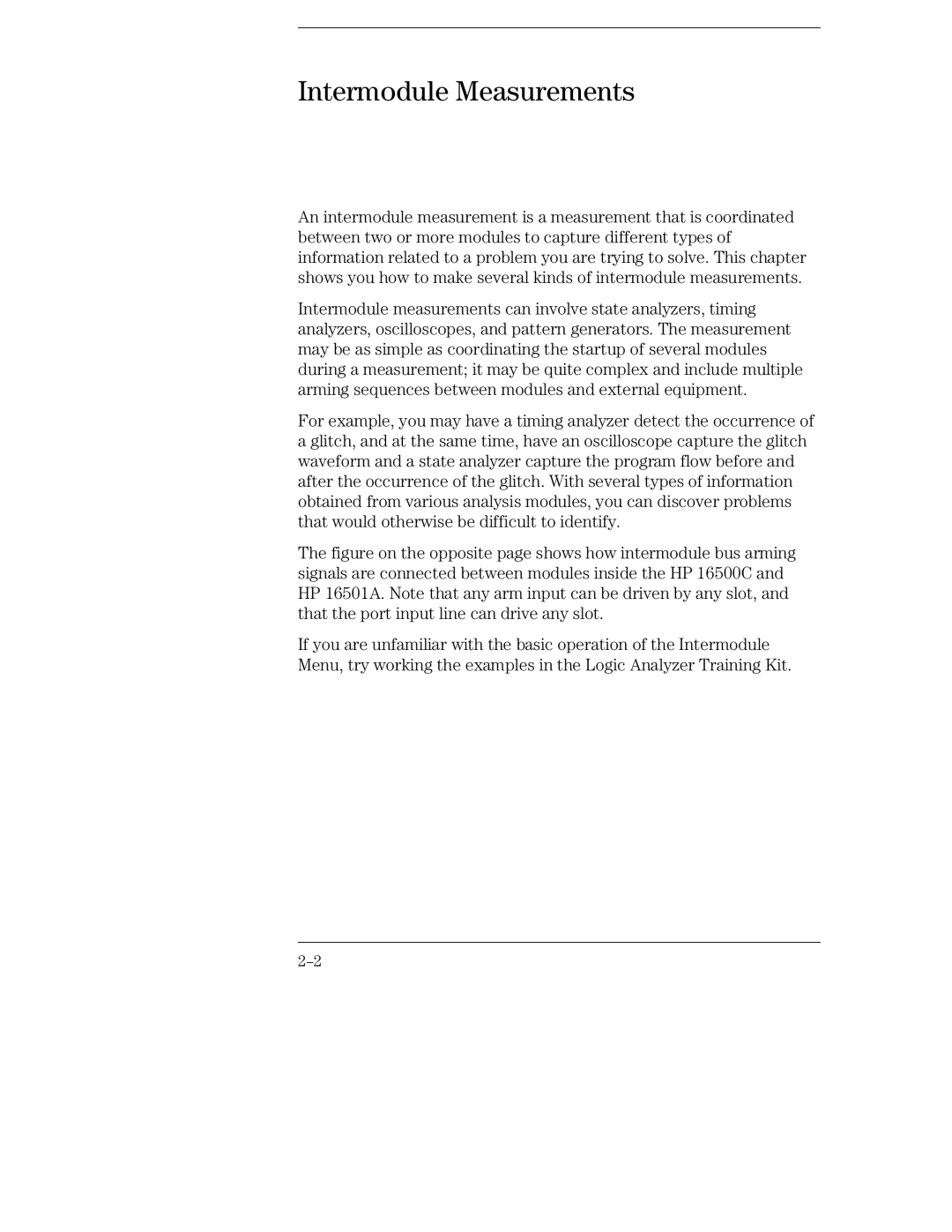
Intermodule Measurements
An intermodule measurement is a measurement that is coordinated between two or more modules to capture different types of information related to a problem you are trying to solve. This chapter shows you how to make several kinds of intermodule measurements.
Intermodule measurements can involve state analyzers, timing analyzers, oscilloscopes, and pattern generators. The measurement may be as simple as coordinating the startup of several modules during a measurement; it may be quite complex and include multiple arming sequences between modules and external equipment.
For example, you may have a timing analyzer detect the occurrence of a glitch, and at the same time, have an oscilloscope capture the glitch waveform and a state analyzer capture the program flow before and after the occurrence of the glitch. With several types of information obtained from various analysis modules, you can discover problems that would otherwise be difficult to identify.
The figure on the opposite page shows how intermodule bus arming signals are connected between modules inside the HP 16500C and HP 16501A. Note that any arm input can be driven by any slot, and that the port input line can drive any slot.
If you are unfamiliar with the basic operation of the Intermodule Menu, try working the examples in the Logic Analyzer Training Kit.
